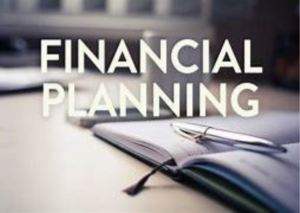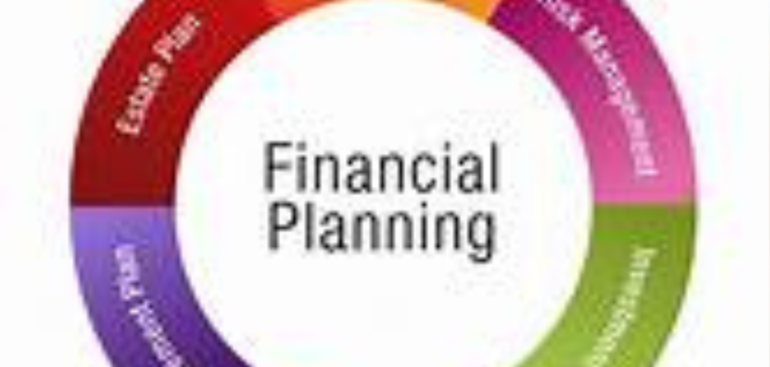How to create a financial plan:
Creating a plan doesn’t have to be complicated. Simply divide it into a few easy steps. If you cover these up, you’ll have all the necessary information to make one.
 1. Set your objectives: What are your financial goals—both short-term and long-term? Short-term goals might include:
1. Set your objectives: What are your financial goals—both short-term and long-term? Short-term goals might include:
I am getting the equilibrium free from a Mastercard.
I am preparing a down payment for a new home.
We are reaching a savings limit.
By depositing to a pension or paying off your mortgage, you could save money for retirement and use the money that would typically go toward your monthly payments in other ways.
2. Create a budget. A budget ensures that your monthly income is more significant than your expenditures. Alternatively, you can enter everything you pay each month into a spreadsheet. The steps below might be helpful.
What enters and exits?
Your income can be easily checked. Anything you regularly earn from your job, pension, side hustles, investments, or interest on savings is considered income.
Now is the time to review your costs. These can be categorized as “discretionary” or “essential.” You must pay the essentials monthly, like rent or mortgage, vehicle expenses, and utility bills.
Expenses you have more control over are covered by your discretionary spending. It includes holiday spending, clothing shopping, subscriptions, dining out, and food shopping. You can see where you could save money by going through these. For instance, do you have any subscriptions you rarely or never use? Or do you regularly indulge in treats that cost you a lot over the month, like drinking coffee daily? Is it possible to avoid shopping for clothes or to find cheaper deals and discount codes online?
 Take care of your debt. After that, examine any unsecured debt, such as credit and store card or personal loan debt. You should try to pay off any debt first because the interest on any debt is typically much higher than the interest on your savings. There are ways to make a large debt more manageable, such as making smaller payments over a more extended period. The Citizens Advice Bureau helps with debt.
Take care of your debt. After that, examine any unsecured debt, such as credit and store card or personal loan debt. You should try to pay off any debt first because the interest on any debt is typically much higher than the interest on your savings. There are ways to make a large debt more manageable, such as making smaller payments over a more extended period. The Citizens Advice Bureau helps with debt.
Comb through your bank account.
Sticking to a budget once you have one for essential and discretionary spending and debt payments is simple. You can request that your bank transfer any additional funds to a separate savings account when you get paid. You can maintain discipline and avoid impulsive purchases by tapping into your savings.
Follow the 50:30:20 rule.
The 50/30/20 rule is another method for creating a budget. Your income is broken down into three parts by this rule. Spending on essentials, like bills, accounts for half. For the future, 20% is set aside for savings, investments, and pensions. You can use the remaining 30% for entertainment, vacations, and gym memberships.
Prepare for unexpected events.
You should have approximately three months’ living expenses as an emergency fund. If you lose your job or have to pay many unexpected bills, you’ll have something to fall back on. Income protection insurance is another option to consider. If you have a long-term illness or an accident that prevents you from working, this will help pay for some of your lost earnings.
3. Create a savings or investment strategy to achieve your financial objectives over weeks, months, or years.
 Short-term savings: You must find a savings account to access your money quickly.
Short-term savings: You must find a savings account to access your money quickly.
Because savings are below inflation, shopping around for the highest interest rate is essential. As a result, each year, your cash savings will have less spending power. Consider utilizing a money ISA because you won’t have to pay taxes and keep more interest.
Long-term objectives: An investment plan may be an option for your more ambitious goals. This plan may entail investing in exchange-traded funds, stocks, or bonds. Over a longer period (at least five years is recommended), these funds may outperform cash savings. However, they also come with a variety of risks.
The likelihood of making substantial profits or losing what you have invested increases with your level of risk. It’s possible that your investments will lose or gain value, and you might not get back the amount you invested. Using our risk tool 4, you can take a quick test to determine how risky you want your investments to be. Keep things current. Once you have a financial plan, you need to review it regularly to ensure you’re meeting your goals or keeping track of changes in your life.
Using a service like Unbiased.co.uk, you can get independent financial and investment advice from a professional if you need help putting it together.
Aviva Financial Advice can assist you in determining your options for investments exceeding £75,000 in value.

